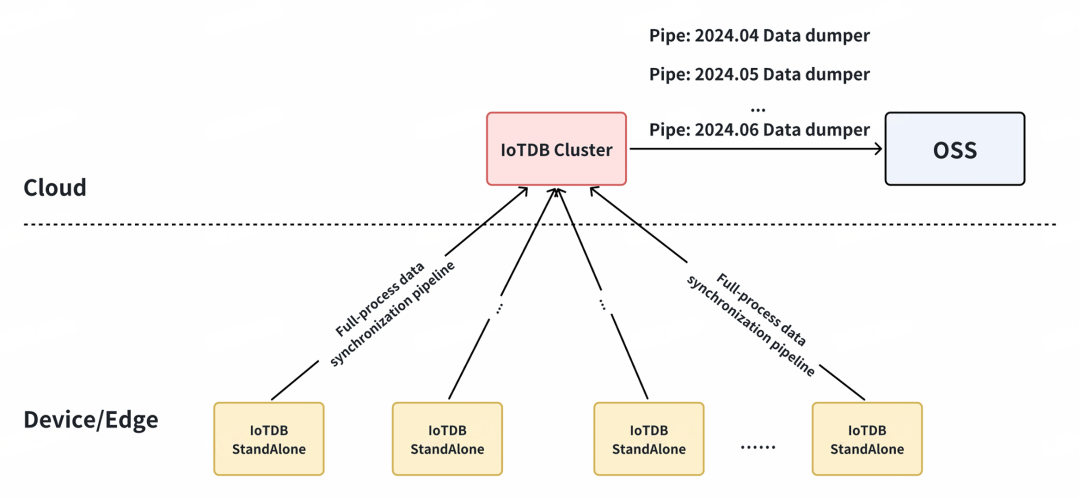With the world of today being data-centric, efficient management and processing of time-series data are of utmost significance in all industries. Whether monitoring IoT devices, stock prices, or server metrics, storing and querying large time-stamped data in real time dictates the rate at which an organization can take action based on data. That's where a TSDB cluster, a time series database cluster, comes into the picture.
Understanding the TSDB Cluster
A TSDB cluster is a distributed system with the specific design of handling time series data—time-ordered data. Unlike traditional relational databases, which are overwhelmed by time-based data velocity and volume, a TSDB cluster is designed for high-performance analytics with data ingestion, compression, and read. Each node in a cluster handles a subset of data so that it can scale out horizontally and maintain high availability.
The major advantage of a time series database cluster is its ability to process enormous volumes of data in real-time from sensors, networks, and applications. For instance, for industrial IoT use cases, the data is created per second by thousands of sensors. A TSDB cluster ensures this torrent of time series data gets collected, stored, and queried effectively without any loss of performance.
Why an Open Source Time Series Database Cluster
Open source technologies transformed data infrastructure. An open source time series database cluster is open, extensible, and cheaper than closed software. Organizations have control over architecture, can add extra modules, and optimize performance based on the usage case with open source solutions.
Top open source TSDB options–such as Apache IoTDB and InfluxDB have good implementations of cluster features. They offer data partitioning, high availability replication, and fault tolerance to keep time series data in a steady state and always available, even if nodes fail. In particular, advanced configuration options like InfluxDB TSDB config empower administrators to fine-tune write buffers, retention policies, and cache parameters across the cluster.
Moreover, open source TSDB clusters have vibrant developer communities constantly optimizing query performance, compression algorithms, and retention policies. This development ecosystem enables businesses to stay ahead of time series analytics without being hampered by vendor lock-in. As more organizations experiment with clustering time series database environments, community-driven innovation continues to enhance reliability and scalability.

Key Features and Benefits
1. Scalability and High Availability
A correctly set up time series database cluster is horizontally scalable. When increased data is accumulated, nodes can be added to distribute the load. Replication across the nodes also gives end-to-end uptime and data redundancy, thus making the cluster fault-tolerant.
2. Optimized Storage and Compression
Time series data tends to have cyclical patterns, and thus compression naturally fits. Open source TSDB clusters leverage advanced encoding schemes that reduce storage usage notably without affecting query latencies.
3. High Ingestion Rate
Ingesting data in a TSDB cluster is parallelized over multiple nodes to enable systems to obtain millions of writes per second. This is particularly beneficial with monitoring, real-time analytics, and IoT use cases where streams of data come in forever.
4. Efficient Querying and Aggregation
Aggregations, moving averages, and anomaly detection are operations optimized on time-stamped data. The cluster is optimized to execute these operations, delivering near-real-time visualizations and insights. Many users optimize query pipelines through parameters similar to InfluxDB TSDB config, aligning system behavior with analytic workloads.
5. Any Deployment Options
An open source time series database cluster can be installed on-premises, in the cloud, or in hybrid deployments. Openness provides flexibility to adhere to deployment approaches aligned with data governance and performance requirements of the firm.
Real-Life Application Examples
Organizations across the world are employing TSDB clusters to host mission-critical applications.
IoT and Smarter Manufacturing: Pools of time series databases are being used by factory floors to track the performance of equipment, predict breakdowns, and optimize manufacturing processes in real-time.
Finance and Trading: Banks track stock price trends and trading history with open-source time series database clusters to enable high-frequency trading and risk management.
Energy and Utilities: Power grid and alternative energy grid depend on time series database clusters to track energy generation, consumption, and grid health.
IT Infrastructure Monitoring: TSDB clusters are utilized by cloud providers and businesses to execute observability—server availability, network latency, and application performance metric monitoring at scale.

The Future of TSDB Clusters for Time Series Data Management
As time series data volumes continue to grow exponentially, TSDB clusters are moving towards higher automation, intelligent query optimization, and greater integration with machine learning platforms. Future open source time series database cluster developments will emphasize scale-out flexibility, predictive analytics, and enhanced data security to support AI-driven use cases.
Optimized system parameters—such as those found in InfluxDB TSDB config—will continue to play a vital role in balancing high-performance ingestion and intelligent analytics across cluster environments. By using a time series database cluster, organizations can maximize the value of their temporal data—harvest richer insights, drive operational excellence, and support data-driven innovation at scale.
Conclusion
The development of open-source time series database clusters is a giant step for data infrastructure for the entire world. They are highly scalable, highly flexible, and high-performance, and as such, they are an absolute requirement for companies that are handling massive amounts of time-stamped data. With increasing industries moving towards digital transformation, the TSDB cluster will remain at the forefront of efficient, solid, and intelligent data management.




